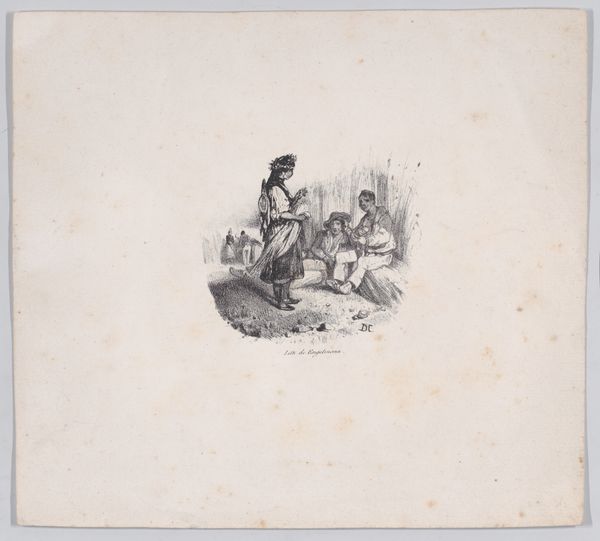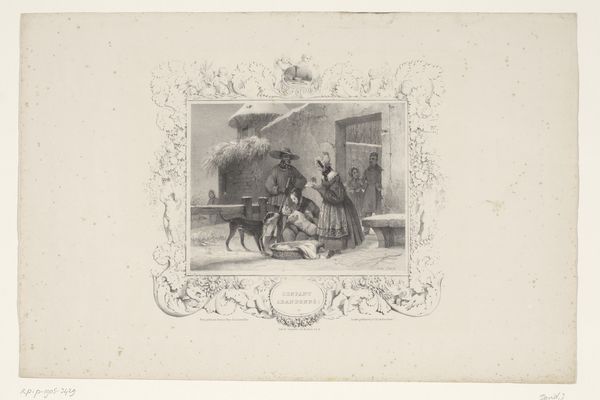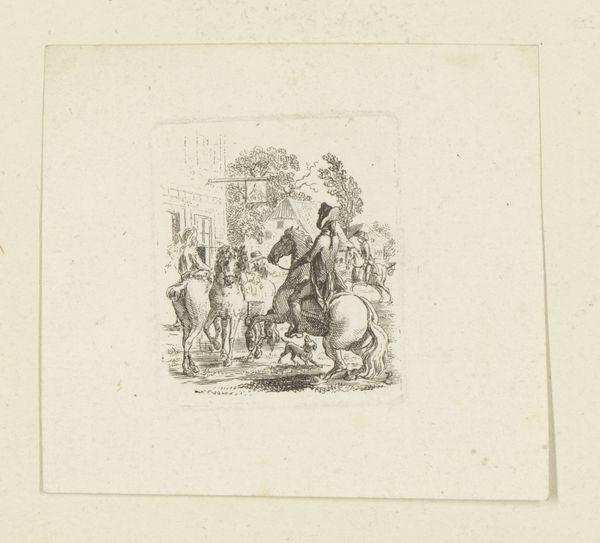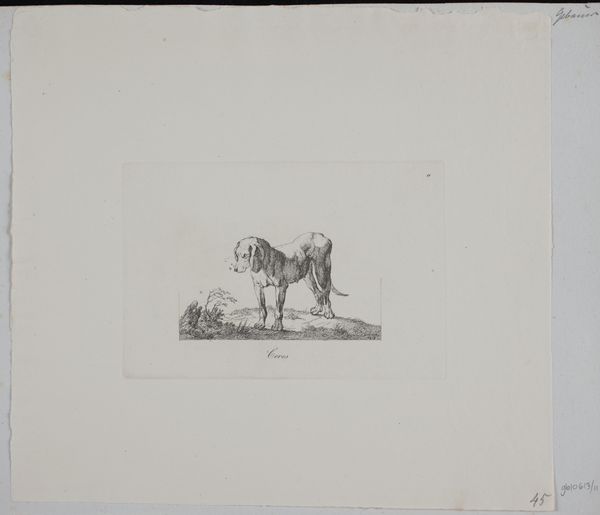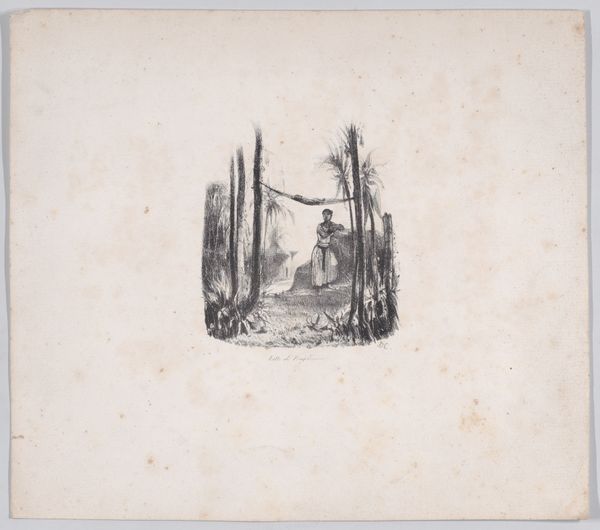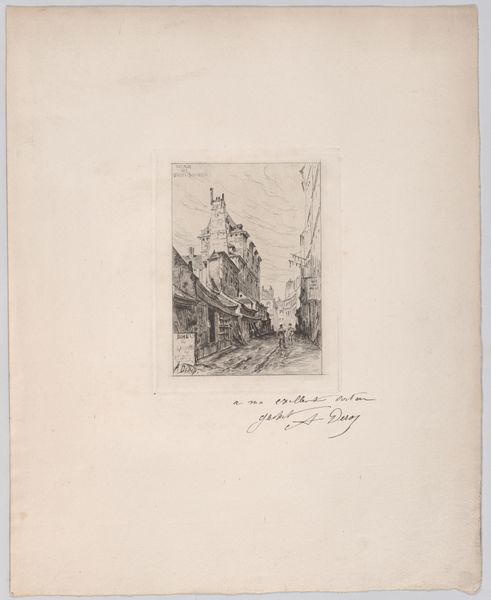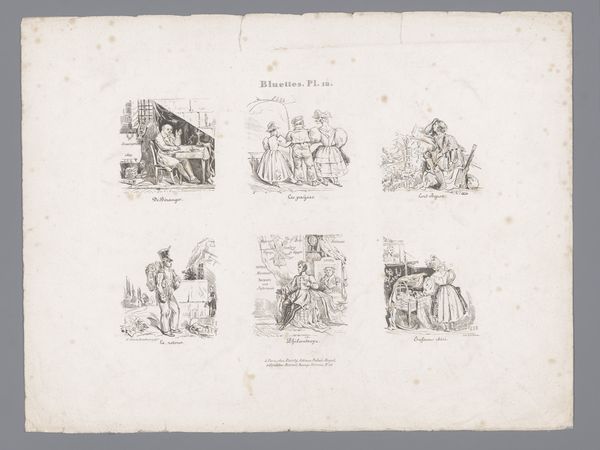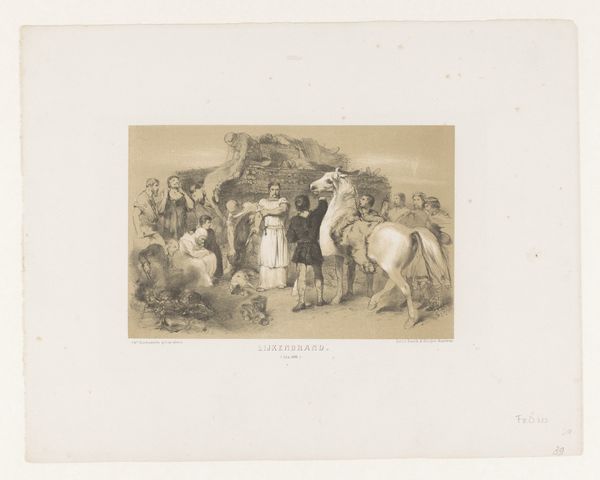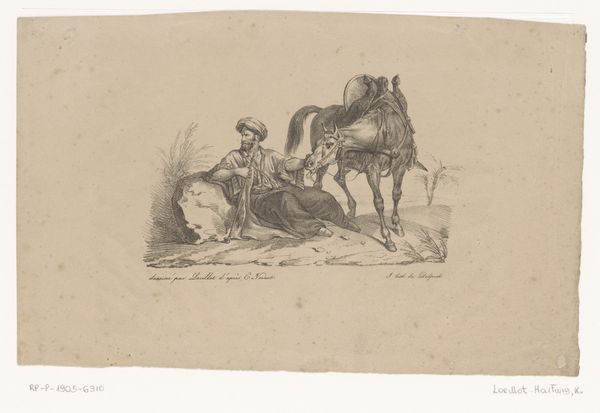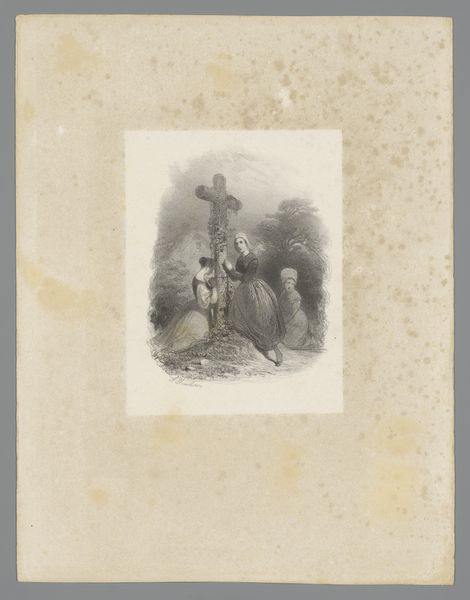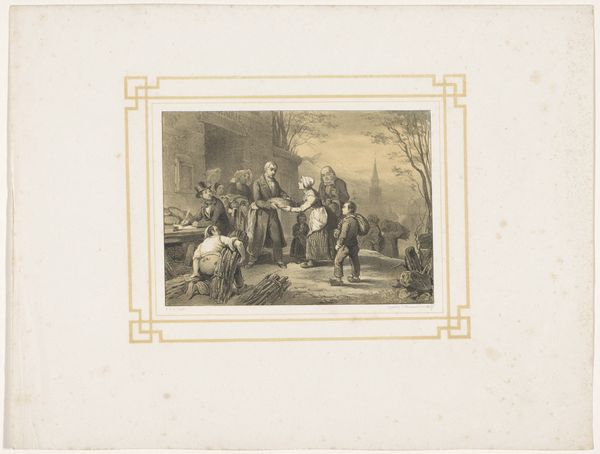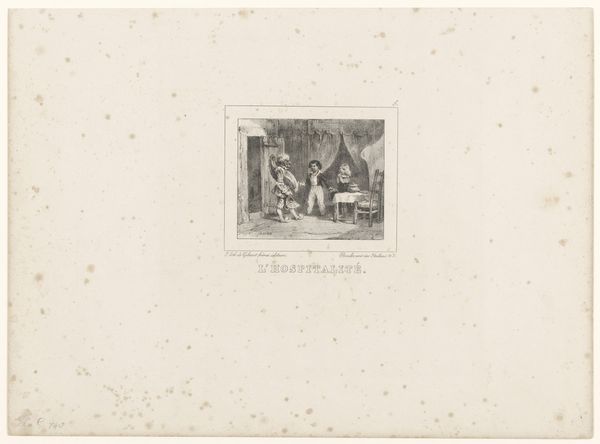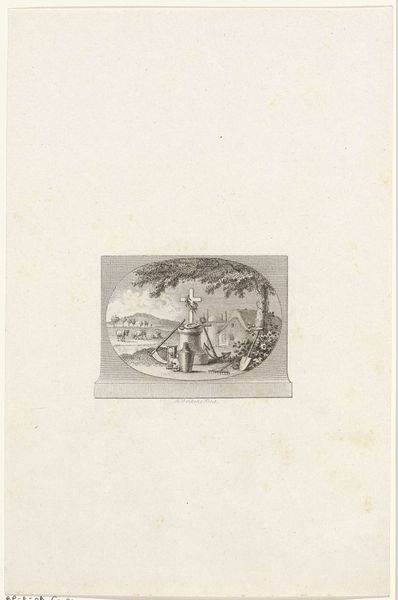
drawing, coloured-pencil, print
#
drawing
#
coloured-pencil
#
narrative-art
# print
#
landscape
#
figuration
#
coloured pencil
#
romanticism
#
genre-painting
Dimensions: Sheet: 9 5/16 × 10 1/16 in. (23.6 × 25.6 cm)
Copyright: Public Domain
Editor: Here we have Alexandre-Gabriel Decamps’ "The Klepht," created around 1830, using coloured pencil and print. It depicts a brigand facing a woman. The rendering has a dramatic, staged quality. What can you tell us about it? Curator: Well, “The Klepht” immediately places us within a very specific socio-political context: the Greek War of Independence. The Klephts were, essentially, brigands who became symbols of Greek resistance against Ottoman rule. Think of them as rebels. So, in considering Decamps’ work, we must acknowledge its place within the Romantic era's fascination with nationalism, exoticism and revolution. Editor: Interesting. I hadn't thought about that rebellious angle so directly. How does that political context shape how we interpret this seemingly simple encounter between these figures? Curator: Everything, really. Decamps wasn't just depicting two people; he was tapping into a potent symbol. Note the landscape, which evokes a certain rugged beauty and sense of place. It situates the narrative, but more importantly, it romanticizes this fight for independence, a rebellion which was captured in various forms of visual media to propagate this narrative. Where do you think the image circulates? Who consumes it and why? Editor: So it’s not just about showing what a Klepht looked like. It's about inspiring specific feelings, perhaps of solidarity and support, and for particular viewers. Curator: Exactly. And this highlights the critical role of art in shaping public opinion. What appeared like a quaint genre scene, in truth, contributes to a visual rhetoric that fueled a movement. Editor: That shifts my perspective quite a bit! It's no longer just an image; it's an instrument. Curator: Precisely. And understanding this makes us better at unpacking the subtle political messages embedded within seemingly harmless artwork, across a diversity of media and formats.
Comments
No comments
Be the first to comment and join the conversation on the ultimate creative platform.
